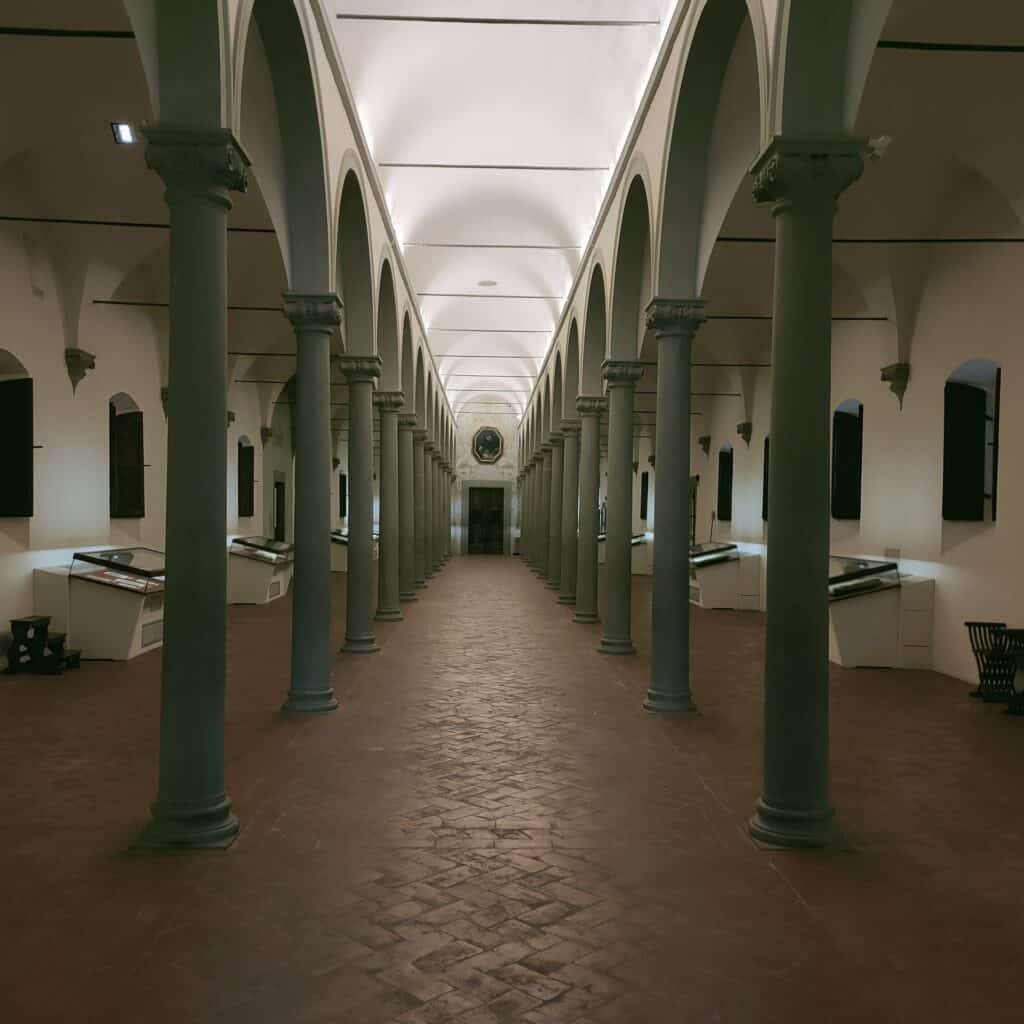Cross the threshold of one of the most mystical and fascinating places in Florence, where art and spirituality come together in perfect harmony: the Museum of St Mark.
This museum is housed in the former Dominican convent, restored and enlarged to its current size at the behest of Cosimo the Elder of the Medici by his favorite architect Michelozzo (1396-1472). Consecrated in 1443, this building was the scene of a fervent religious activity undertaken by the friar Girolamo Savonarola.
The dominican Friar Angelico was commissioned to create the frescoes in the cells of the friars who lived here, all located on the first floor. The museum exhibits a beautiful Last Supper frescoed by Domenico Ghirlandaio at the end of the fifteenth century, while the library houses a valuable series of illuminated manuscripts.
Some precious relics and fragments left over from the nineteenth-century destruction of the historic center of the city are placed in the underground rooms together with a rare and evocative collection of bells.
Let yourself be guided on this unique journey through cells frescoed by the genius of Fra Angelico, where each brushstroke tells a story of devotion and beauty. From illuminated manuscripts to ancient bells, every corner of this museum hides treasures waiting to be discovered.
Book your guide to the museum now and immerse yourself in an experience that will take you to the spiritual heart of the Florentine Renaissance.
Tour of St Mark Museum: route and duration of the visit
Two hours of guided tour to learn about the religious, artistic and historical value of such an exclusive museum complex. Your guide will lead you to discover the most evocative environments of this Museum, in particular:
- The Cloister of St Antonino: built by Michelozzo in 1440, the Church of San Marco, the ancient Hospice, the Refectory Room and the Chapter Room overlook its entire perimeter. The oldest fresco decorations on the walls of the cloister belong to the friar who lived here, Fra Beato Angelico;
- The Hospice Hall: here, originally, the humblest pilgrims were welcomed. The room is dedicated to Fra Angelico and collects many of his most important paintings on wood;
- The Chapter Hall: frescoed by the painter friar, the complex and allegorical Crucifixion completed in 1442 stands out;
- La Piagnona: linked to Savonarola’s events, the church bell (called “la piagnona”, in reference to the “piagnoni”, or the followers of Savonarola), underwent a symbolic trial for having sounded the alarm when the Florentines crowded into the convent to take the friar condemned for heresy;
- The Washbasin Room: here the friars washed their hands before meals. This part of the convent has maintained its late-fourteenth-century architectural appearance. In this room there is the Last Judgment, a beautiful fresco made largely by Friar Bartolomeo;
- The Great Refectory: the room was in the exclusive use of the friars of the convent. It is dominated by the fresco by Giovanni Antonio Sogliani (signed and dated 1536) with the Providence of the Dominicans, considered a variant of the theme of the Last Supper: the Dominican friars, left without food after the death of their founder, are miraculously served by angels;
- The Small Refectory (Ghirlandaio’s Last Supper): originally intended for the guests of the Convent, it was frescoed in 1486 by Domenico Ghirlandaio with the episode of the Last Supper;
- The Guesthouse: an environment in which numerous stone remains from the nineteenth-century demolitions of the center of Florence and the ghetto between the nineteenth and twentieth centuries are collected.
On the first floor are placed one after the other the cells where the monks and novices slept. Each cell is frescoed by Fra Angelico. Among these, there is Savonarola’s cell divided into three rooms in which the chair, which has gone down in history as the “Savonarola chair”, the study table, the robe he wore and other artifacts that belonged to the friar are kept.
Also on the first floor is the Michelozzo Library: built by Michelozzo at the behest of Cosimo of the Medici, it is a 45-meter-long room in which 115 illuminated manuscripts are kept and are exhibited here in rotation.
Main stops of the museum
The stages of the guided tour of the Museum of St Mark are:
- The Cloister of Sant’Antonino
- The Hospice Room
- The Chapter Room
- The Washbasin Room
- The Great Refectory
- The Small Refectory
- The Guesthouse
- The Cells
- Michelozzo’s Library






